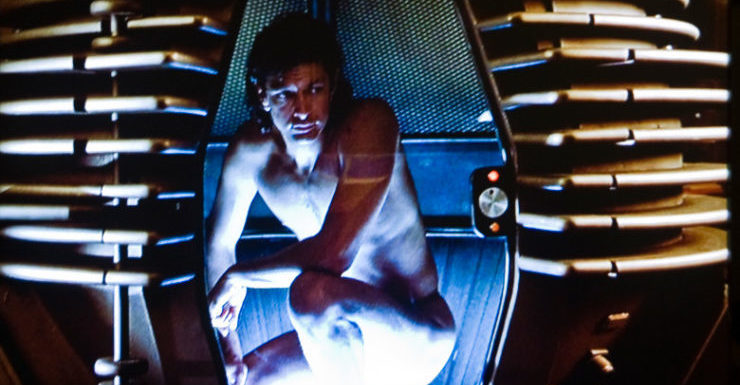The human body is a wonder of intricate systems, all tuned towards survival. Most of the time. It is guaranteed that your body will turn on you one day. You will sicken, or weaken. You will die. (Hopefully not while you read this.) For as much as the human body has been studied, there still remains a world of mystery beneath our skin. And where there is uncertainty, there is horror.
Body horror in particular feasts upon the flesh, the fluids, and the processes that keep us functioning day-to-day. While the average person might fall victim to age or disease—or unlucky bathroom accidents— it could also be a mad scientist, an alien invader, or, worst of all, love, that transforms and transfigures the fantastic, fragile, human body. These five films examine the visceral through the visual and have a lot to say about how we view our identity, morality, sexuality, and, ultimately, our mortality.
Spoiler warning: things are about to get messy.
Get Out (2017)
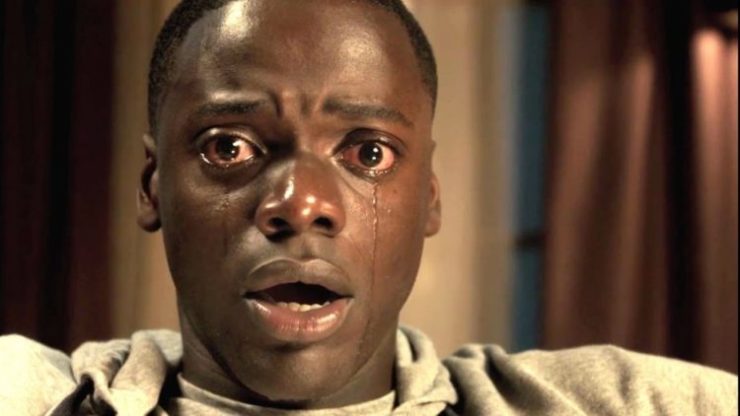
When photographer Chris Washington goes home to meet the parents of his wealthy and white girlfriend Rose, he really, really doesn’t fit in. Stranger still, there’s something off about the other black people Chris meets at the isolated estate. Jordan Peele’s smash hit was The Stepford Wives by way of Guess Who’s Coming to Dinner? and might, on first glance, seem a bit too clean for this list. The terror that spoke to so many in Get Out wasn’t bloody, but was instead a terrifying journey to “the sunken place,” a subconscious prison that renders your free will obsolete. But mind control is only part of the equation, as Get Out‘s body-swapping turn forces viewers to examine the realities of “post-racial” America, where blackness is both a commodity to be further exploited and a painful liability.
Spring (2014)
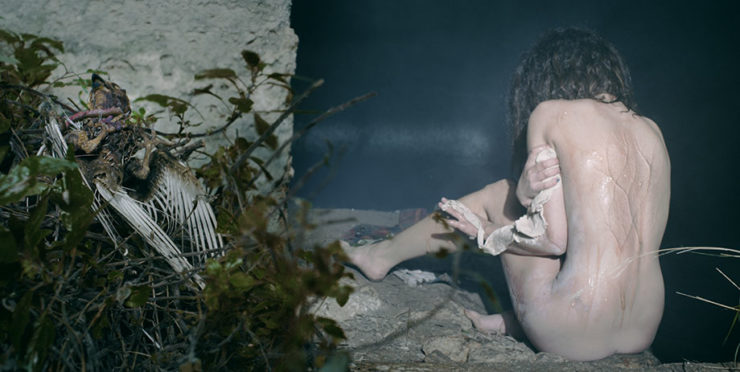
It’s a tale as old as time: boy gets charged with assault after a bar-fight and flees America to work illegally on an olive farm in Southern Italy where he meets a beguiling local girl who sometimes morphs into a Lovecraftian horror. Shot on digital video with an entirely unknown cast, Spring could look a lot more polished and be much better-acted but Louise, the girl with a mysterious “skin condition” is an intriguing character who radiates confidence no matter what form she’s taking. She’s also a most interesting monster, with no known origin story, just a lifecycle that dictates she must rejuvenate and reproduce herself again and again. There’s a disappointing Love Conquers All motif going on with the much more boring Evan, but, for many moments, Spring showcases some amazing stretches of human body and imagination.
Kissed (1996)

This little-seen Canadian drama is an unflinching look at a young woman’s lifelong obsession with death. Molly Parker (Deadwood, House of Cards) plays Sandra, a quiet mortuary worker, who has fetishized dead bodies from a young age. Meticulously researched, Kissed portrays the post-mortem ritual of embalming in loving, terrifying detail. Necrophilia is one of the ultimate taboos and director Lynne Stopkewitch mingles decay and desire in a muted way that strives more for transcendence than sensationalism, while still confronting viewers with Sandra’s appalling violations of her victims. As Sandra struggles with her addiction, she starts her first relationship with a (breathing) medical student who will go to extremes to get close to her. While the end seems inevitable, it’s no less compelling.
The Fly (1986)
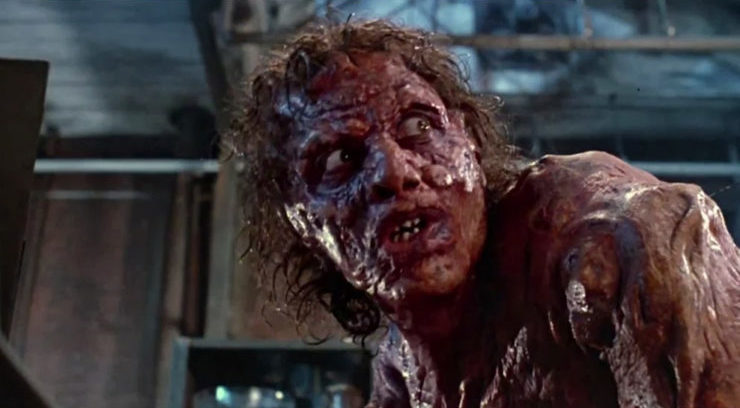
The earlier work of Canadian director David Cronenberg is synonymous with body horror. This whole list could be entirely made of Cronenberg films, from the sexually-transmitted viruses of Rabid and Shivers, the merging of man and technology explored in Videodrome, eXistenZ, and Crash (the chilly JG Ballard adaptation, not that lesser film of the same name), to the gynecological nightmare at the center of Dead Ringers. But few films explore the humanity within the monstrous as perfectly as Cronenberg’s Academy Award-winning remake of The Fly, starring Jeff Goldblum as Seth Brundle, a scientist whose terrible teleportation experiment accidentally splices his DNA with that of a housefly. After an initial rush of newfound athleticism and libido… things fall apart. And off. (Seth keeps more than aspirin in his medicine cabinet!) As Seth becomes increasingly desperate and less empathetic, his romance with the intelligent, beautiful Geena Davis comes to a heartbreaking and gorey conclusion. Unless you’re a monster yourself, you will shed tears when you’re not covering your eyes.
The Thing (1982)
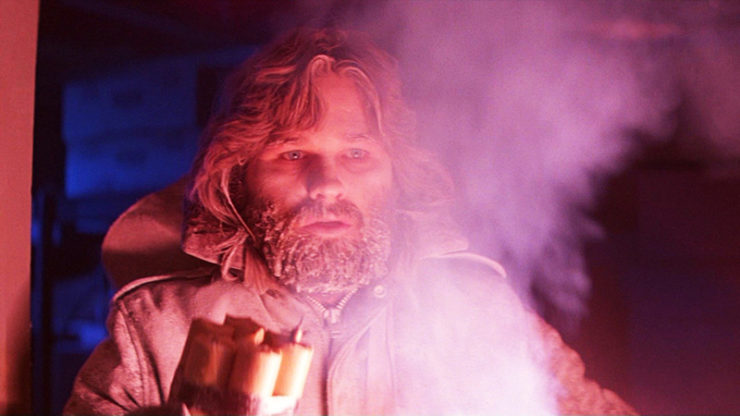
An alien lifeform terrorizes an isolated Antarctic research station, assimilating its hosts from within while maintaining the host’s outward appearance, leading to extreme paranoia for the scientists trapped inside during a powerful storm. Based on the John W. Campbell, Jr. novella Who Goes There?, John Carpenter’s The Thing is elevated by an atmospheric synth score composed by the legendary Ennio Morricone, memorable performances from frequent Carpenter lead Kurt Russell and They Live’s Keith David, and practical FX from Rob Bottin that still hold up despite being over 30 years old. The extraterrestrial interloper mutates severed heads into creeping crabs, gaping ribcages into biting jaws, and Wilford Brimley (!) into a towering mass of tentacles, tumors, and fangs. Even animals aren’t safe from The Thing’s survival mission; I still can’t help but give Alaskan Malamutes some serious side-eye. The graphic violence, steady dread, and utter nihilism of the ending have made The Thing widely regarded as one of the best horror films of all time.
Further viewing: Clive Barker’s S&m-tinged Hellraiser, the chestbursting xenomorphs of Alien, Stuart Gordon’s Lovecraft shocker From Beyond, the Lynchian cyberpunk Japanese masterwork Tetsuo: The Iron Man, Evolution, Eraserhead, The Blob (1988), black comedy-horrors Idle Hands and Tusk, Deadgirl, and, if you really hate yourself, The Human Centipede.
Theresa DeLucci loves Jeff Goldblum in all forms and is a regular contributor to Tor.com. Follow her on Twitter.










